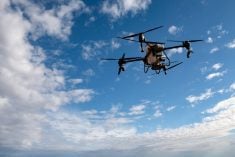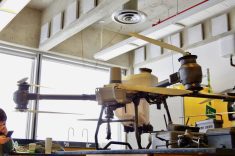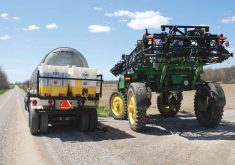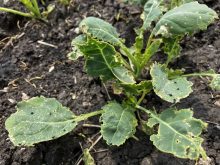The latest drone technology in agriculture was on full display at Ag in Motion 2024 in Langham, Sask., drawing a crowd to a demonstration of the latest models.
Smaller drones designed for surveying, and crop/livestock monitoring are already a tool in many farmers’ toolboxes, but the larger spray drones are also becoming more practical in a Prairie context.
“With the spraying we’re doing on canola and other crops, we’re losing too much money on tracks, and it’s getting costly for airplanes and helicopters,” said Dwayne Bacon, a farmer from Kinistino, Sask. attending the event.
Read Also
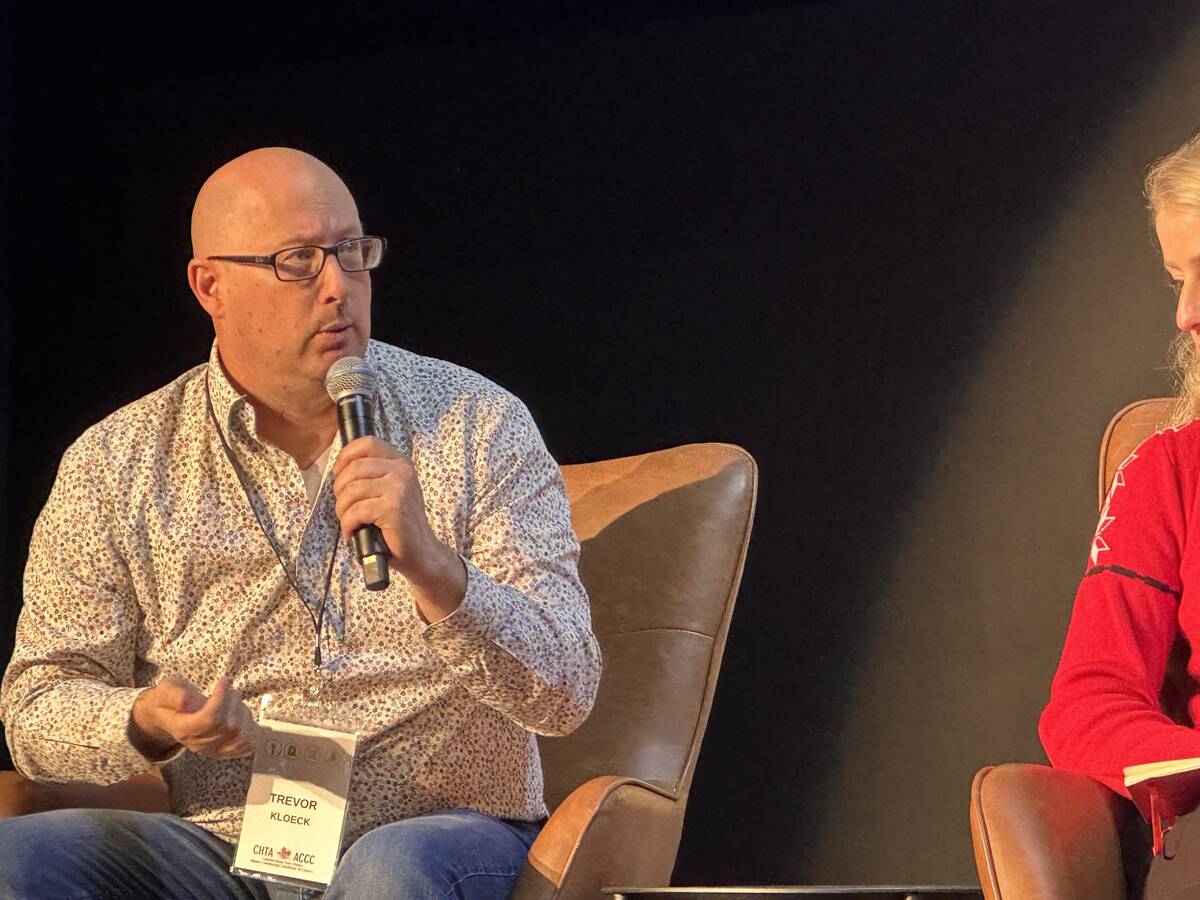
Time to be honest about hemp, experts say
Years of hype have given way to a more realistic view of hemp. Farmers and processors say the crop’s future depends on solid agronomy, honesty.
“This will be a new thing for farmers to get into,” he added.
The spray drones on display had the capacity to cover 40 to 50 acres per hour. However, while the technology is there, regulatory approval for the applications of most interest to farmers is lacking.
“The regulations are running behind the technology… which puts farmers in a tough position,” said David Koop, chief operating officer of Green Aero Tech.
Under the current Canadian regulations, spray drones are legally allowed to do such things as applying fertilizer and spreading seed, but no pesticides have regulatory approval from Health Canada’s Pest Management Regulatory Agency (PMRA).
“It’s not allowed, but is it being done? Absolutely. And is it the primary interest? Absolutely,” said Markus Weber, president of Landview Drones. He expected the vast majority of spraying drones were being used for applying pest control products, desiccants and herbicides. “I realize that’s not currently considered legal by PMRA, but that is what most of the people buying spraying drones are doing.”
“There are definitely people being told that it is legal to apply on their own farm by vendors that are eager to sell these drones. That is not the case, the PMRA considers it equally illegal if you’re spraying on your own farm or spraying on someone else’s farm,” said Weber.
“There are people going in with their eyes closed, but there are also people going in with their eyes wide open and they don’t have another option,” said Weber, noting that small farmers often have no other choice for applying fungicide in-crop without a high clearance sprayer.
“It will be a year full of drama, and I’m looking forward to that drama because I think that’s what it will take in this business to get things to change,” said Weber.
“Many farmers don’t realize that spraying off label with a drone is considered illegal by PMRA, and I hope those aren’t the people that are prosecuted,” said Weber, noting he expected to see some enforcement in 2024 with heavy fines a possibility.
While approval for agricultural chemicals could be years away, there was a glimmer of hope when the PMRA approved the Garlon XRT brush-control herbicide for drone usage in just the past week.
“We look forward to when we’ve gone through the process and are able to do everything,” said Koop, adding “farming’s tough up here, and guys need every single edge they can get.”



